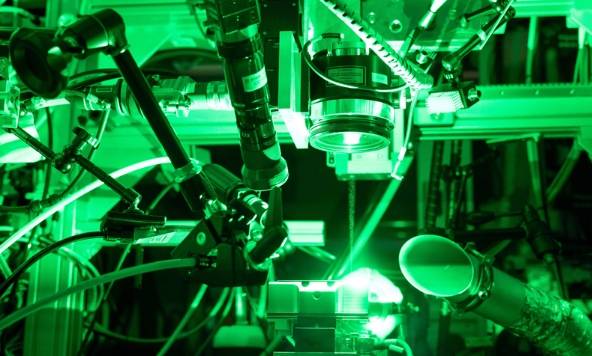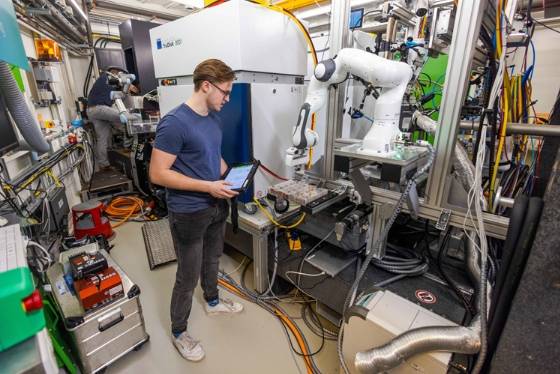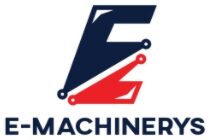
Positive Insights on Laser-Welding Emerge from Trumpf, Fraunhofer-ILT, and DESY Collaboration
An investigation conducted at the German Electron Synchrotron DESY of the Helmholtz Association in Hamburg has revealed the potential for significant raw material savings in the welding process of high-performance electronics. This finding is particularly relevant as high-performance electronics play a crucial role in electric vehicles, ensuring optimal battery and motor performance.
The researchers from Hamburg, in collaboration with high-tech company Trumpf and Fraunhofer Institute for Laser Technology (ILT), have conducted an in-depth investigation into the laser welding processes employed in the production of electric vehicles (e-cars).
Combining their expertise in X-rays, laser sources, and welding processes, Trumpf, Fraunhofer ILT, DESY, and the Helmholtz Center Hereon have achieved groundbreaking results. They have unveiled previously unseen insights that are imperceptible to the naked eye and even microscopic examination. The key finding is that using a laser with a green wavelength significantly reduces the production of rejects compared to other laser welding techniques. This breakthrough not only helps car manufacturers save raw materials but also contributes to a more sustainable approach to manufacturing.
The project partners utilized the particle accelerator’s high-power X-rays and the experimental setup at Hereon to conduct their investigation. This setup enabled them to capture high-speed images at a rate of several thousand to ten thousand frames per second.
According to Marc Hummel, a scientist at Fraunhofer ILT, their goal was to utilize the particle accelerator investigations to obtain detailed insights into the specific factors that differentiate copper welding.
“The stability of the welding process holds great significance as electric vehicle manufacturers are tasked with establishing billions of high-quality connections.”
Trumpf and Fraunhofer ILT have ambitious plans to extend their research to various other domains, including 3D printing, laser cutting, and laser drilling using ultrashort pulse lasers. They also aim to collaborate with additional industry partners to further enhance their research efforts.
Fewer rejects

Laser technology faces significant challenges in the field of electromobility, especially when it comes to the manufacturing of crucial components using copper, which is a key material in e-mobility. Copper has the unique property of absorbing only around 5 percent of laser radiation in the near infrared range (NIR), while also possessing excellent heat conductivity. Recognizing this challenge, Trumpf offers lasers with green wavelengths in addition to NIR lasers in its product lineup. Mauritz Möller, Automotive Industry Manager at Trumpf, explained:
“Laser technology with green wavelength is the solution to this problem. In fact, copper welding can be significantly improved using these lasers.”
The green wavelength is absorbed more effectively by copper compared to infrared. This allows the material to reach its melting temperature faster, resulting in a quicker start to the welding process and reducing the need for high laser power. Mauritz Möller emphasized the significance of more stable welding processes, stating:
“By achieving greater stability in welding, we can minimize rejects and contribute to enhanced sustainability, which is a crucial aspect in the field of e-mobility.”
Particle accelerator experiments
For a comprehensive analysis of welding processes, the Fraunhofer ILT experts, in partnership with the Chair of Laser Technology LLT at RWTH Aachen University, leverage DESY’s PETRA III X-ray light source at the experimental setup located at the Helmholtz Center Hereon. Marc Hummel elucidated:
“Conventional techniques merely capture the electromagnetic emissions from the plasma. However, with DESY’s radiation, we gain the ability to not only observe the interior of the melt but also visualize the dynamics of the melting process.”
In order to achieve this, a collaborative team from Fraunhofer ILT and TRUMPF conducted an in-depth examination of laser welding processes at DESY, employing two distinct laser systems: a near-infrared (NIR) laser and a laser emitting green wavelength. Möller emphasized the significance of this endeavor, stating:
“This presents a tremendous opportunity for us to investigate welding processes on industrial components, including the formation of spatters and pores, as well as the impact of heat generated during the welding process on delicate electronic components.”
